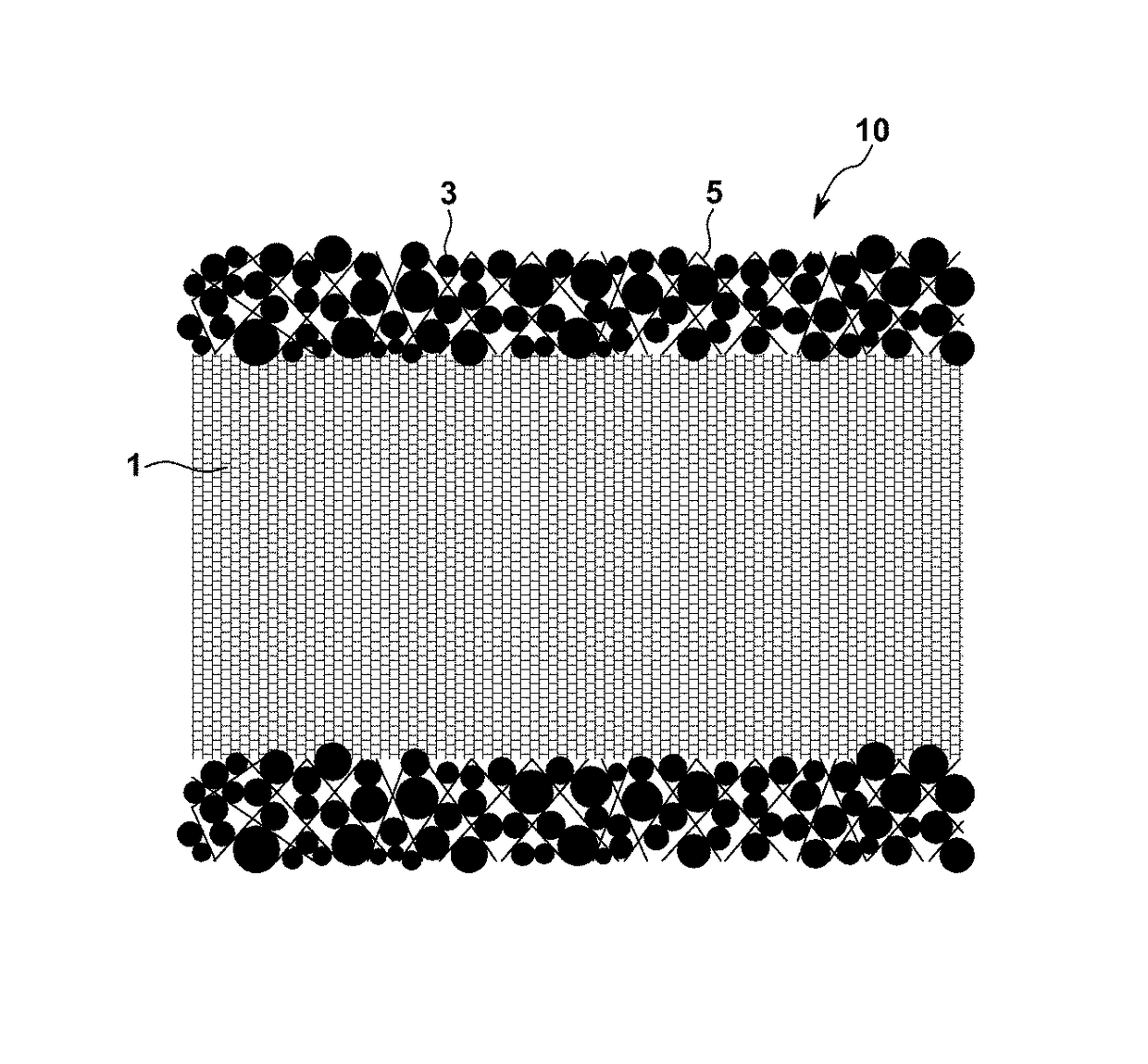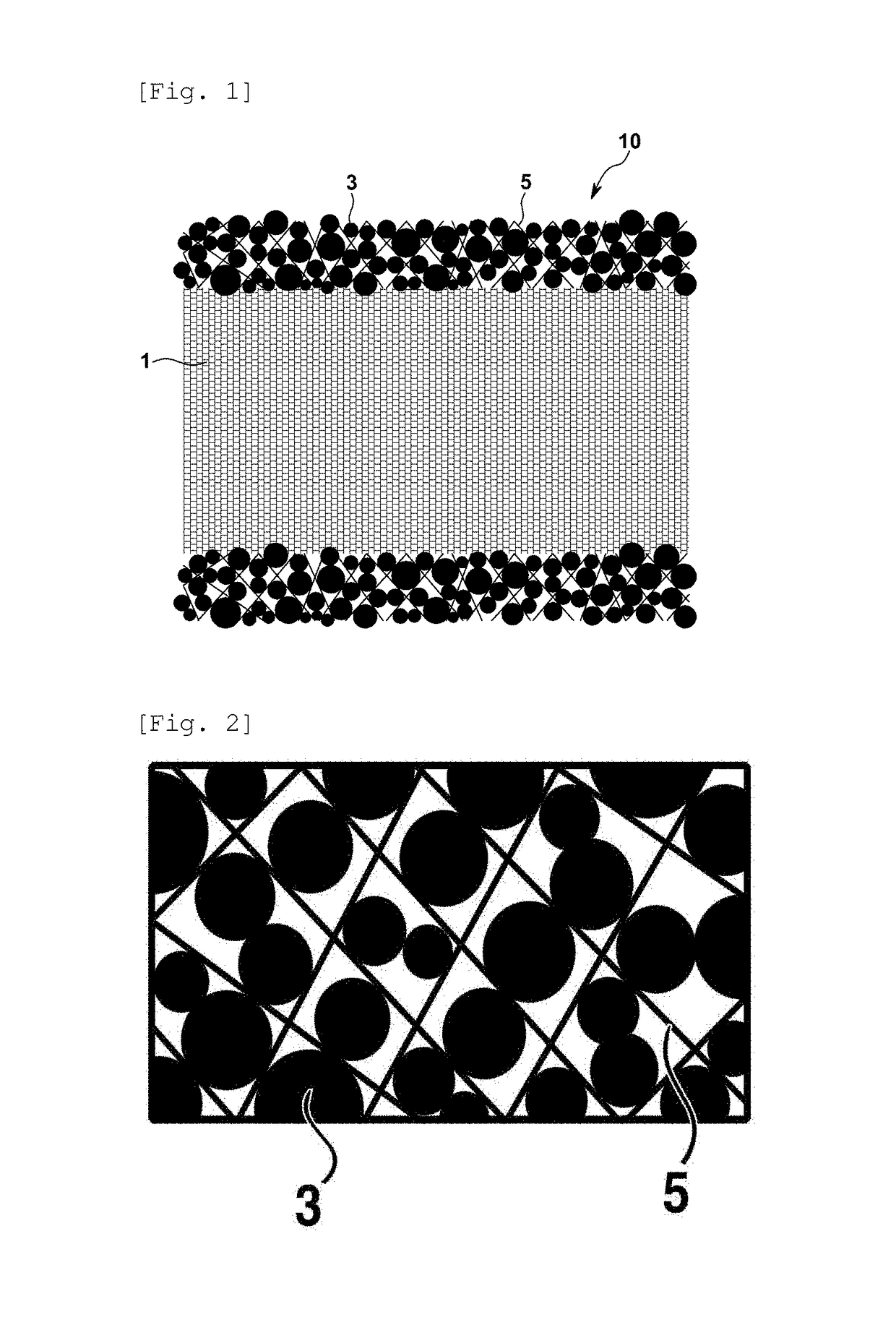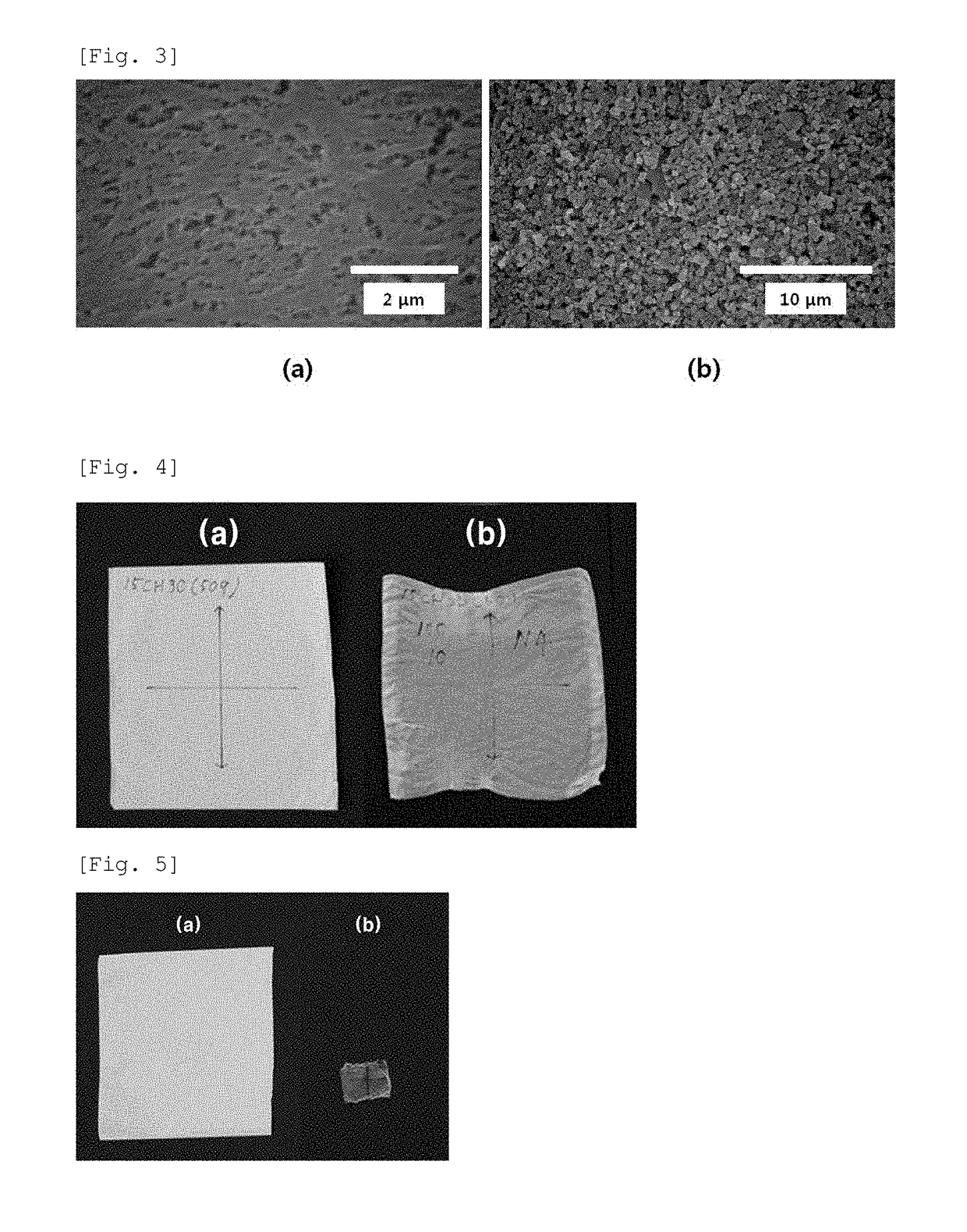Separator with enhanced heat resistance and electrochemical device containing the same
a technology of enhanced heat resistance and electrochemical device, which is applied in the manufacture of final products, cell components, batteries, etc., can solve the problems of limited heat resistance, short circuit between a cathode and an anode, and potential danger of explosion of lithium secondary batteries, so as to enhance the high temperature cycle characteristics of the electrochemical device, increase the insolubility of an electrolyte, and enhance the effect of dimensional stability
- Summary
- Abstract
- Description
- Claims
- Application Information
AI Technical Summary
Benefits of technology
Problems solved by technology
Method used
Image
Examples
example 1
1-1. Preparation of Separator
[0068]A copolymerized polyester was prepared using common methods disclosed in Korean Patent Application Laid-Open Publication No. 10-2007-0119229 using terephthalic acid, dimethyl 1,4-cyclohexanedicarboxylate, trimellitic acid anhydrate, ethylene glycol, an 2,2-bis(4-hydroxyphenyl)propane propylene oxide adduct, 1,4-cyclohexanedimethanol, glycerol and hydrogenated polybutadiene polyol (number average molecular weight was approximately 1,300 g / mol, hydroxyl group was 75 KOH mg / g). The prepared copolymerized polyester had properties that the molecular weight was 18,000 g / mol, the glass transition temperature was 71° C., and the -OH value was 5 to 11 KOH mg / g. After 2.0% by weight of the copolymerized polyester was completely dissolved in a solvent in which tetrahydrofuran and cyclohexanone are mixed in a weight ratio of 5:5, 14% by weight of alumina particles having an average particle size of approximately 0.4 μm is introduced and dispersed thereto. 0.2%...
experimental example 1
Evaluation on Separator and Lithium Secondary Battery Characteristics
[0077]The thickness, the permeability and the thermal shrinkage percentage of the separators prepared according to Example 1, and Comparative Examples 1 to 3, and the discharge capacity of the lithium secondary batteries prepared according to Example 1, and Comparative Examples 1 to 3 were evaluated using the following experimental methods.
experimental example 1-1
Measurement on Separator Thickness
[0078]The thickness of the separator was measured using a micrometer, and the experimental results are shown in the following Table 1.
PUM
| Property | Measurement | Unit |
|---|---|---|
| thermal shrinkage percentage | aaaaa | aaaaa |
| thermal shrinkage percentage | aaaaa | aaaaa |
| dielectric constant | aaaaa | aaaaa |
Abstract
Description
Claims
Application Information
 Login to View More
Login to View More - R&D
- Intellectual Property
- Life Sciences
- Materials
- Tech Scout
- Unparalleled Data Quality
- Higher Quality Content
- 60% Fewer Hallucinations
Browse by: Latest US Patents, China's latest patents, Technical Efficacy Thesaurus, Application Domain, Technology Topic, Popular Technical Reports.
© 2025 PatSnap. All rights reserved.Legal|Privacy policy|Modern Slavery Act Transparency Statement|Sitemap|About US| Contact US: help@patsnap.com



